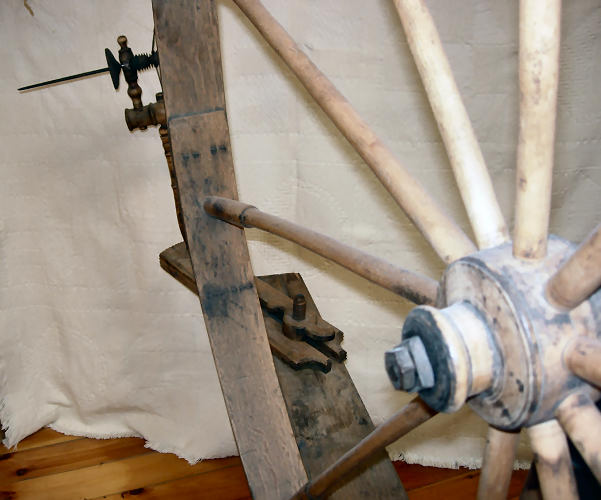

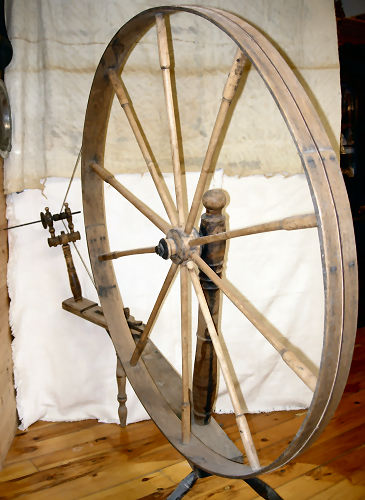
| This type of spinning wheel was known as a wool wheel or, variously, a great wheel. The nature of wool hairs to have tiny barbs on each end presented certain requirements on the spinner. In order to spin the wool hairs, the spinner had to stand at the wheel and move away from it at intervals to allow the hairs to catch on each other and then pull them tightly together. In the actual process of spinning wool hair into thread, the housewife would concentrate on adding hairs to the emerging thread while a child would turn the large flywheel by hand. It will be noticed, in the images below, that there is no foot treadle. It would have been impossible for the housewife to sit at the wheel with her foot on a treadle and still pull the thread far enough away from the wheel to have the hairs latch on to each other and stretch out. |
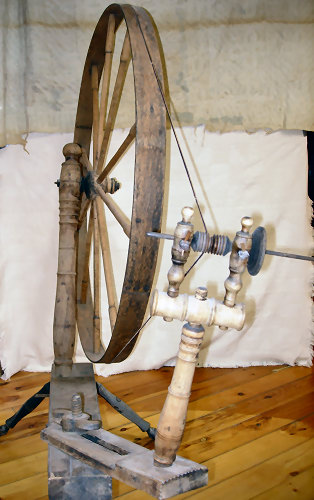
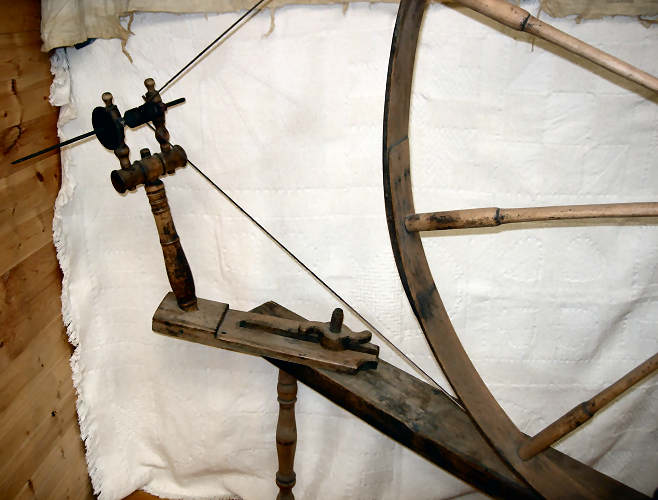
| The spindle assembly is attached to the wheel's base plate by means of a wooden screw and "lock nut". It is capable of being positioned so that the spindle is in line with the flywheel, which sticks away from supporting shaft. |
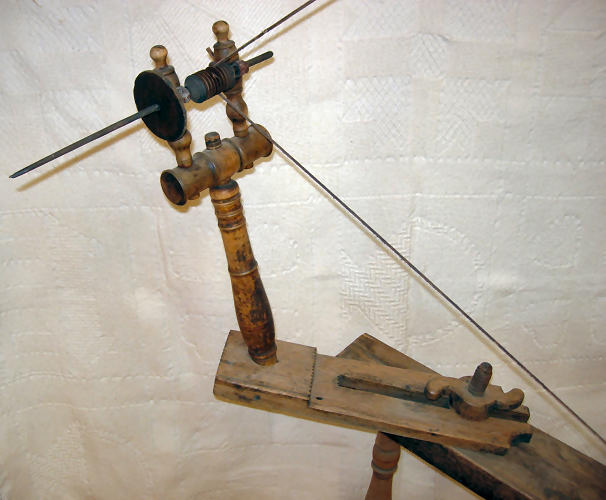
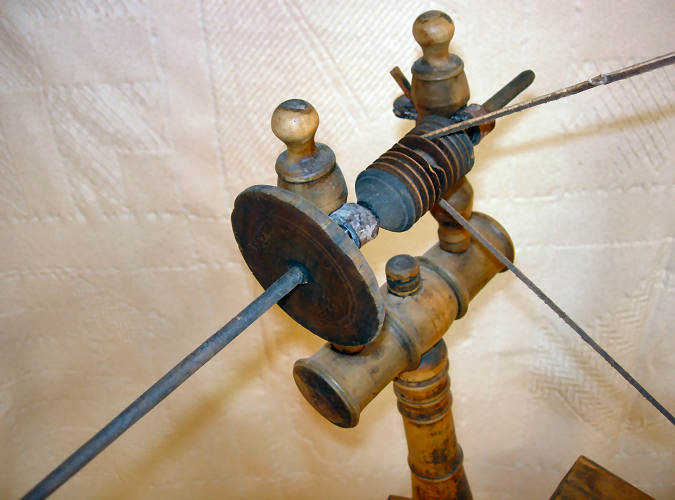
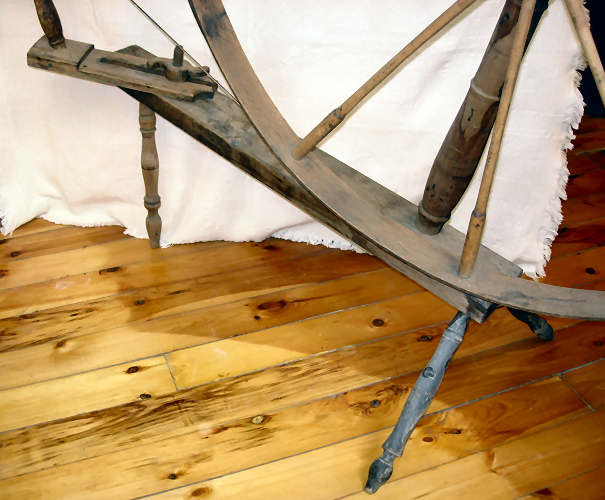
| Notice, in the image below, how the wheel's rim is constructed of a single flat strip of wood, bent in a circle and then attached by overlapping the ends and tacking them together. The inner ends of the spokes of the wheel were sunk into a wooden hub, and then the outer ends of the spokes were simply butted against the inner face of the wheel's rim and held in place by a single nail. |
